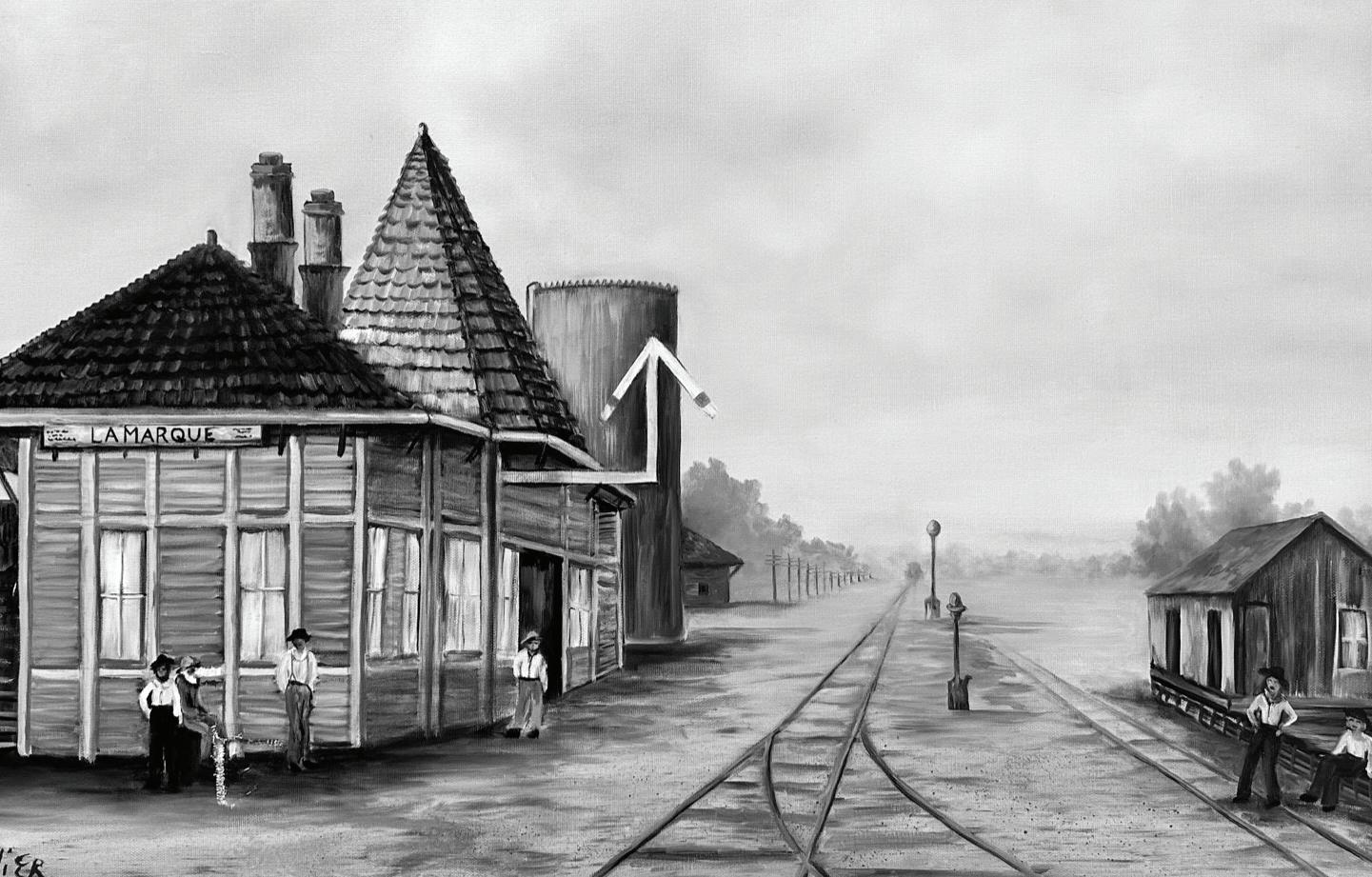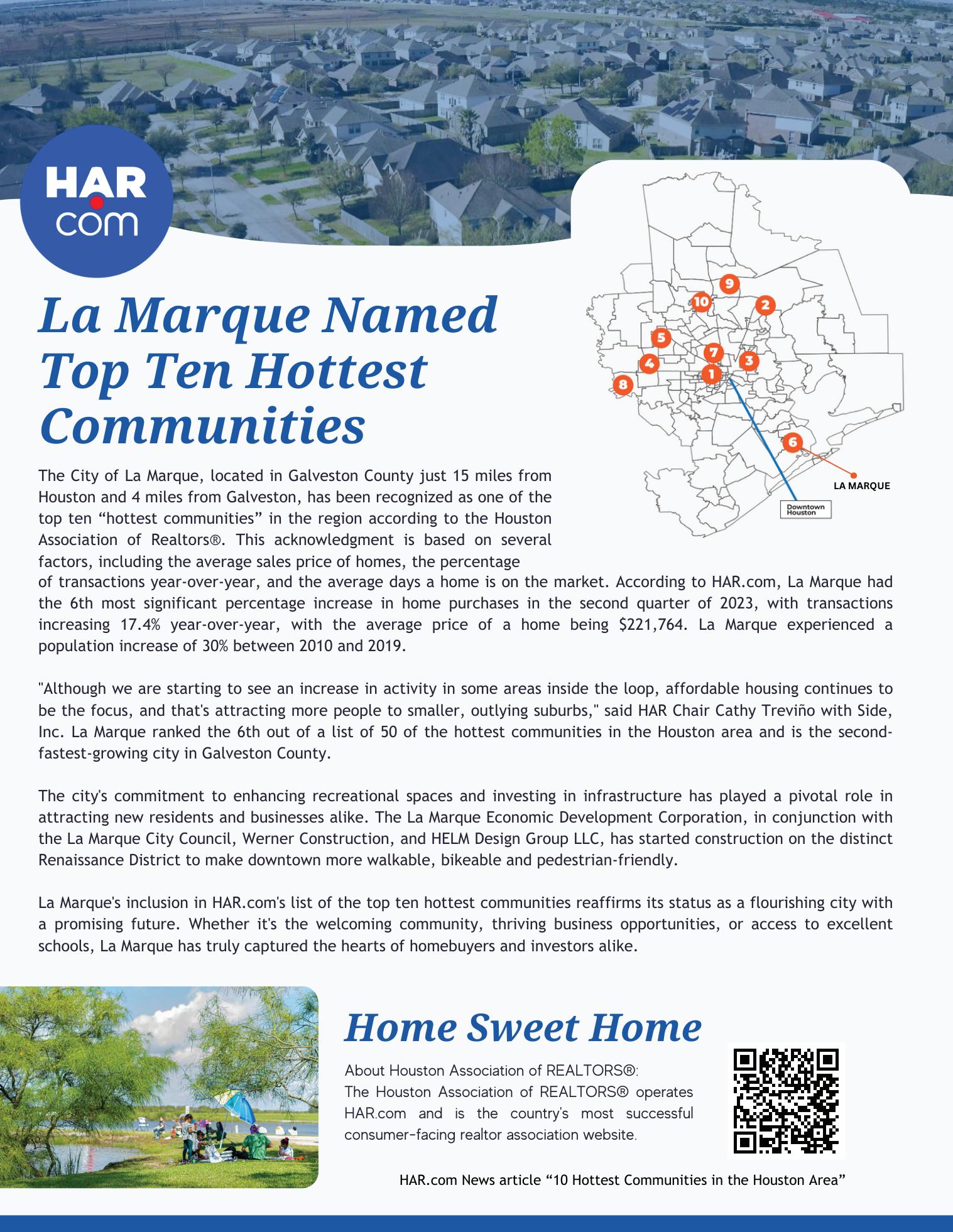
1 minute read
La Marque: A Historical Evolution of Identity and Growth - Celebrating 70 years
Back then, all you had to do was file a petition signed by fifty qualified voters of the area in question. The petitioning party was also obligated to submit a delineated map of the proposed incorporation area alongside the petition. Going off highway maps, Austin, along with fellow businessmen Gordon Muir, M. K. McDaniel, and Bill Crowley, commenced the signature collection around 7 p.m. on September 4, having to explain to every person signing exactly what they were petitioning for.
Remarkably, Austin's group managed to gather fifty-eight signatures shortly after midnight on September 5 and proceeded to wake County Judge Theodore Robinson up at 1:30 a.m. to bear witness to the petition. However, before the ink had dried on these signatures, news arrived that Texas City had, regardless of the petition, annexed La Marque during an unscheduled city council meeting at 6 a.m. that day; Texas City officially annexed all of La Marque.
Advertisement
The disregard of La Marque's petition
swiftly transformed a politically charged situation into an intense blaze within hours. According to Austin, Texas City authorities enlisted additional legal counsel from Houston to advocate their stance. Texas City tried to invalidate La Marque's petition on the grounds of a technicality. Austin clarified that the accuracy of the boundary maps was crucial for their validity, and due to an oversight, they had labeled a street as '5th' instead of '3rd'.
For several weeks, La Marque lingered as an uncertain territory, a no man's land, as the courts decided the matter. After three weeks of careful consideration, the court dismissed the error in the boundary map, allowing the citizens of La Marque to chart their course. On October 10, 1953, the incorporation vote concluded with 902 in favor and 253 against. Had they been unsuccessful, they would have inevitably become a part of Texas City.
Austin attributed the victory primarily to the community's desire for selfgovernance, which eclipsed all other factors and secured the desired outcome.
La Marque's journey saw it serve as a residential hub for employees of Union Carbide and other plants in the region, as well as the Galveston Island Medical Center. In 1977, the town's population surged to 17,000 residents with 130 businesses. The City has grown from six families in 1867 to a population of over 19,000 today. Resources: The History of La






